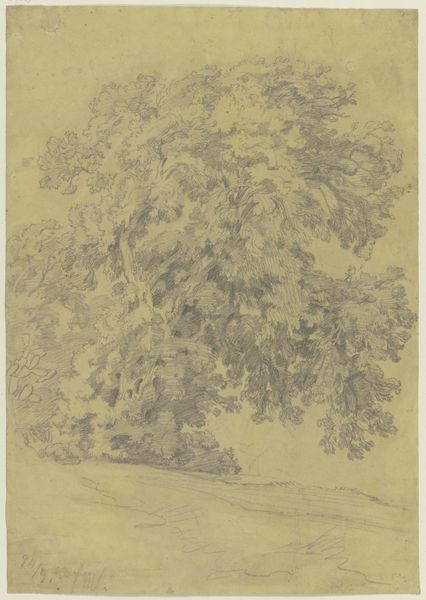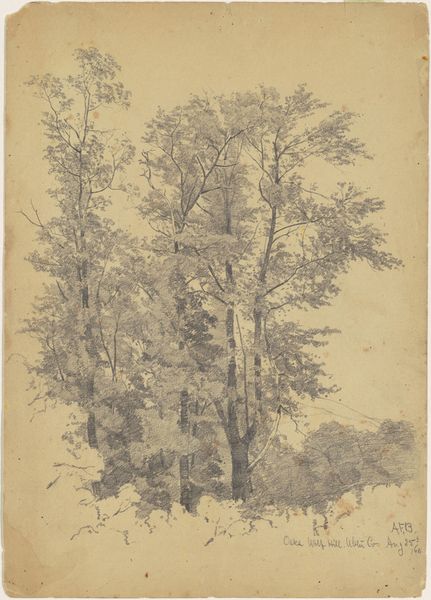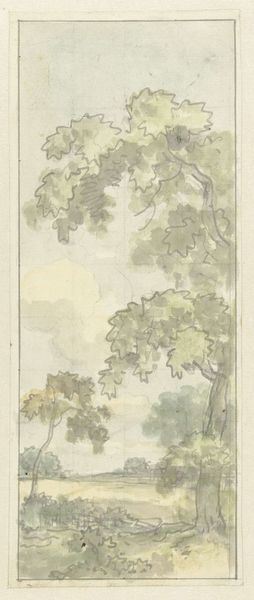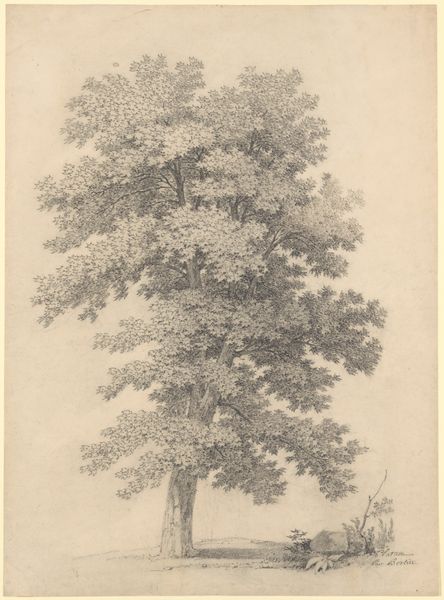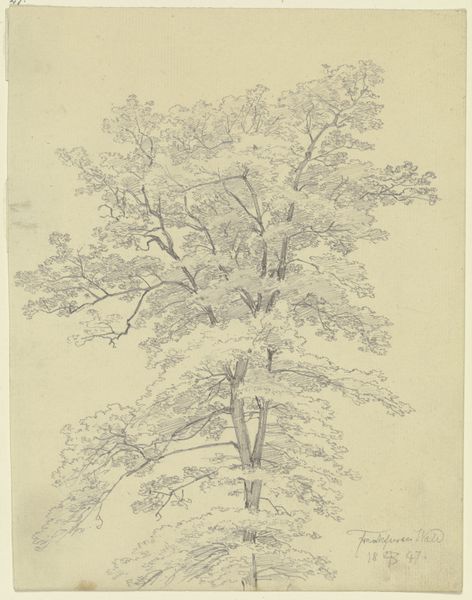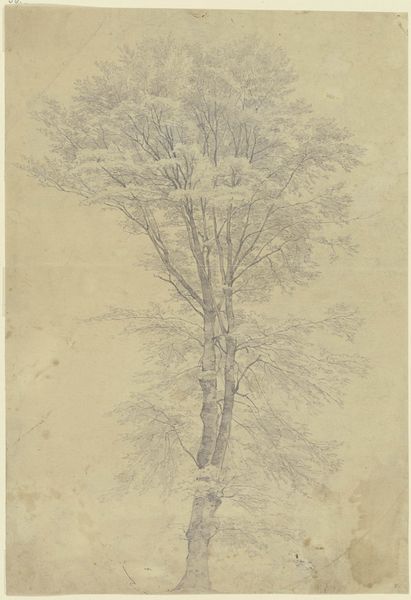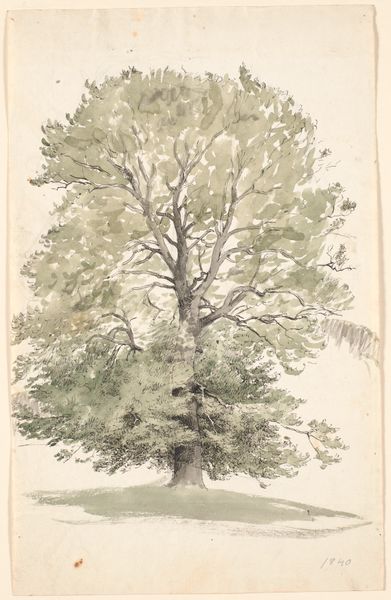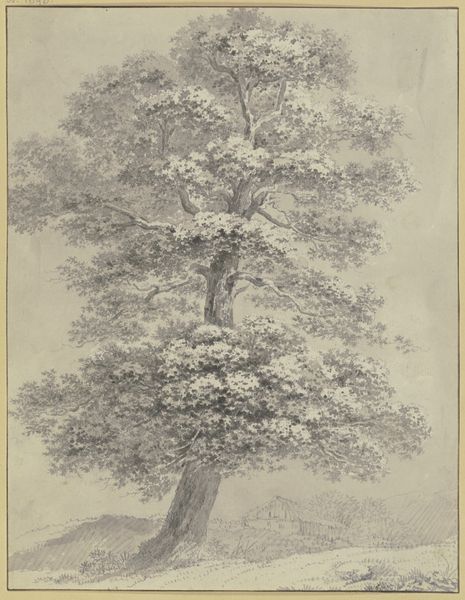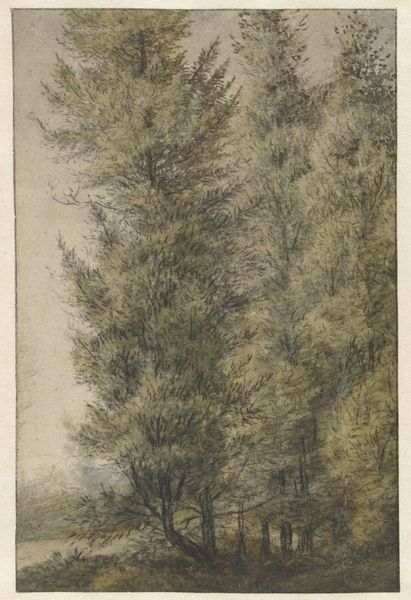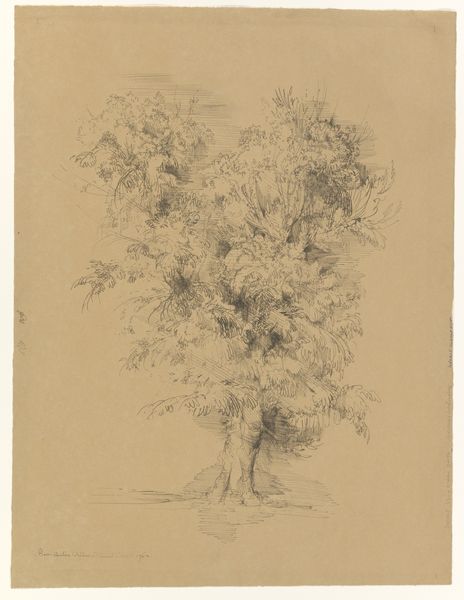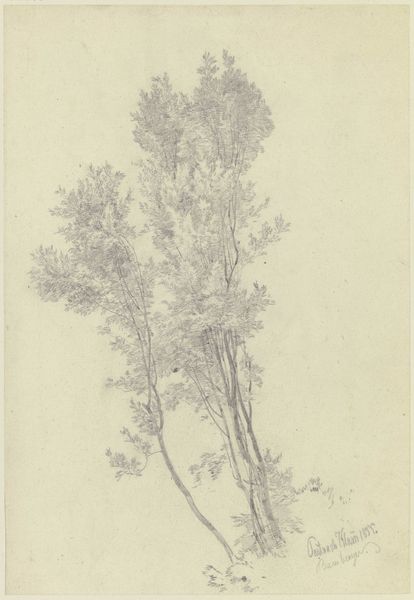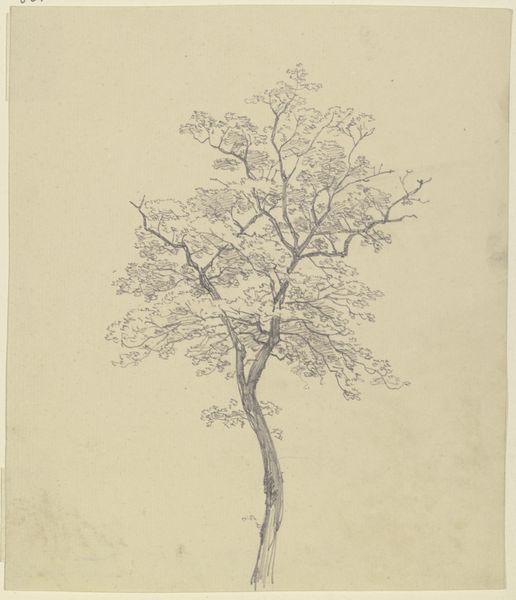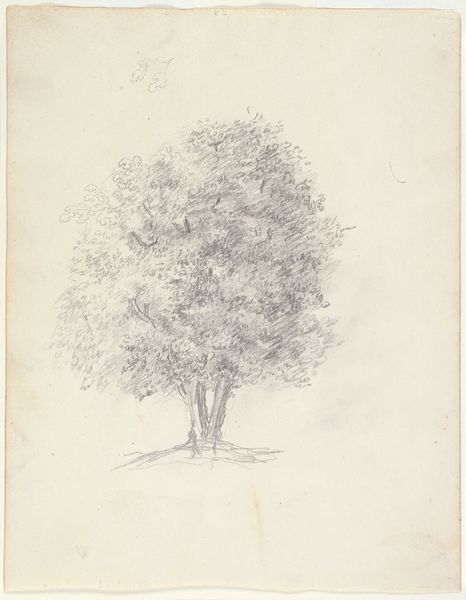
painting, watercolor
#
painting
#
pencil sketch
#
landscape
#
watercolor
#
romanticism
#
botanical art
#
watercolor
#
realism
Dimensions: height 152 mm, width 122 mm
Copyright: Rijks Museum: Open Domain
Curator: Welcome. Today, we’re observing Aaron Edwin Penley’s “Studie van een iep,” believed to have been created sometime between 1817 and 1870. It's a watercolor and pencil sketch. Editor: My initial impression is one of gentleness. The soft washes of color create a calming effect. The elm seems almost weightless against the muted sky. Curator: Considering the period in which Penley worked, it’s interesting to consider the materiality itself. Watercolor, often seen as a less "serious" medium than oil paint, allowed for portability and quicker execution. This facilitated open-air studies, aligning with the growing Romantic sensibility toward nature. Think of the ready availability of paper and watercolor versus preparing a canvas for oils, too. Editor: I agree; however, the choice of an elm tree as the subject speaks volumes. In many cultures, the elm represents dignity, strength, and resilience. Notice how Penley captures the dense network of branches, reaching upwards. It almost evokes a sense of reaching for enlightenment or a connection to something higher. The sheer abundance of foliage hints at nature’s bounty and enduring power. Curator: Absolutely. The tree becomes a symbolic representation of growth, both literally and metaphorically. When we discuss the societal context, this would also include Penley's life and background—how his work reflects both his artistic inclinations and the economic and cultural values surrounding art creation and consumption in his era. Who bought the watercolors? How did they consume the image of nature? Editor: That's very relevant. And when viewed through the lens of symbolism, it asks questions about our relationship with the natural world and what it means to us, both individually and collectively. Even the choice of muted colors – predominantly greens and blues – has symbolic significance. Curator: The simplicity of the piece can distract, yet understanding the labor involved in producing it is crucial to a thorough study, which then gives symbolic meanings another level of significance. Editor: Ultimately, the artwork presents the quiet grandeur and symbolic richness that can be found in a single tree. Curator: Indeed, examining both material reality and its symbolic load deepens our engagement with such seemingly simple subjects.
Comments
No comments
Be the first to comment and join the conversation on the ultimate creative platform.
